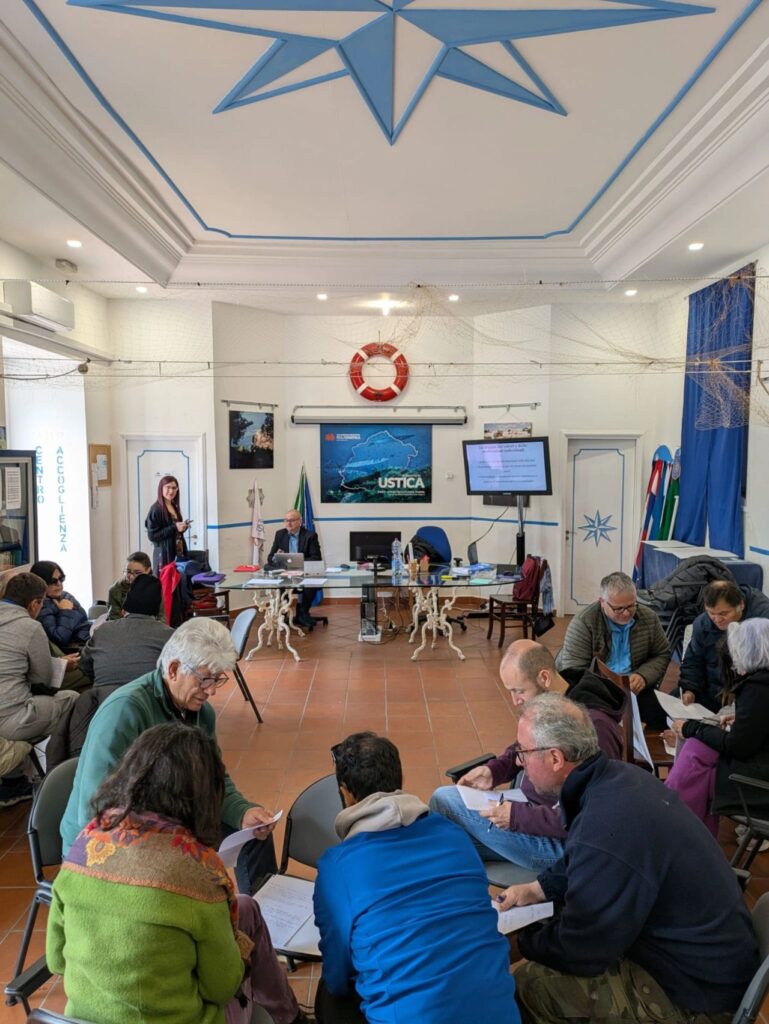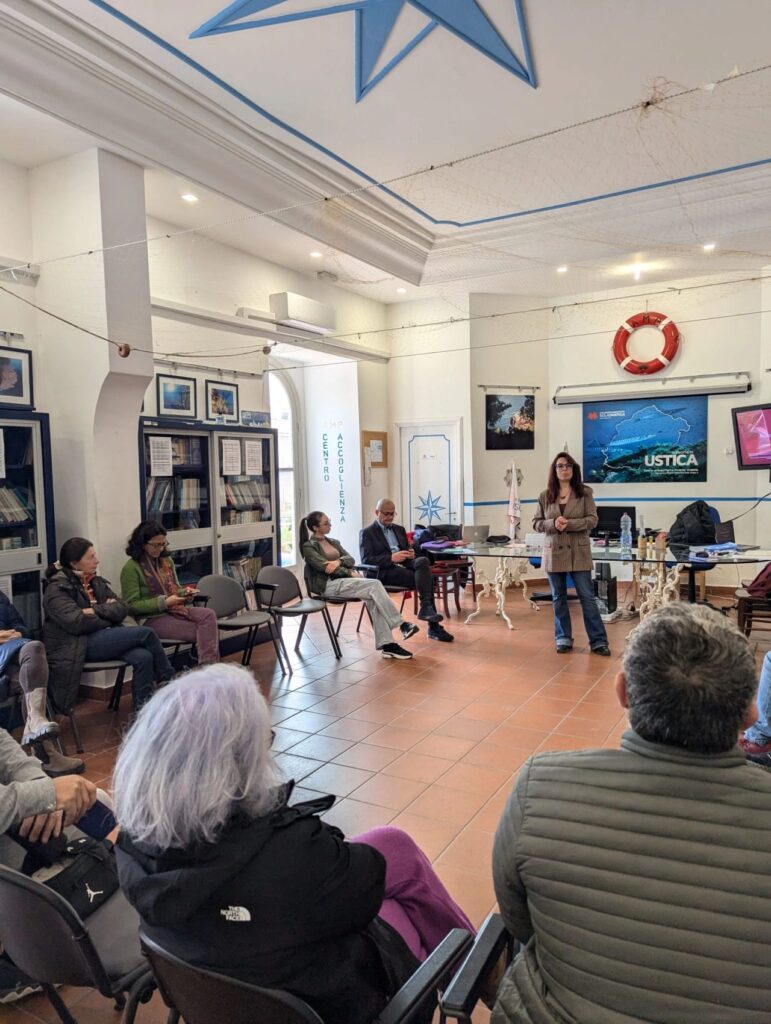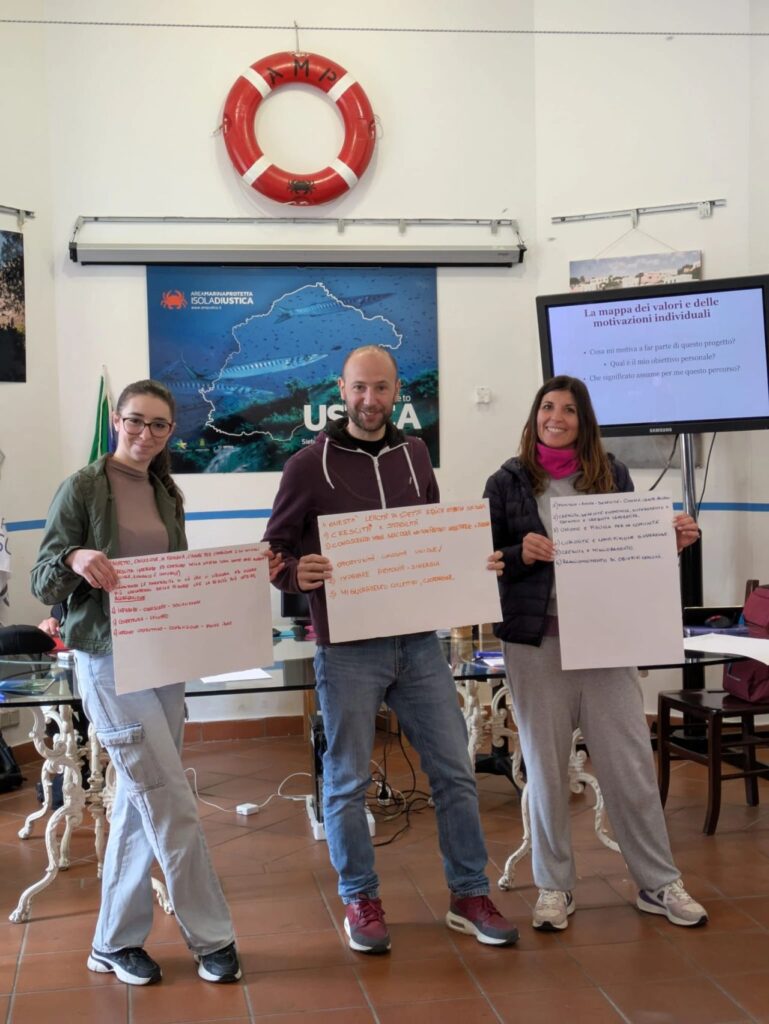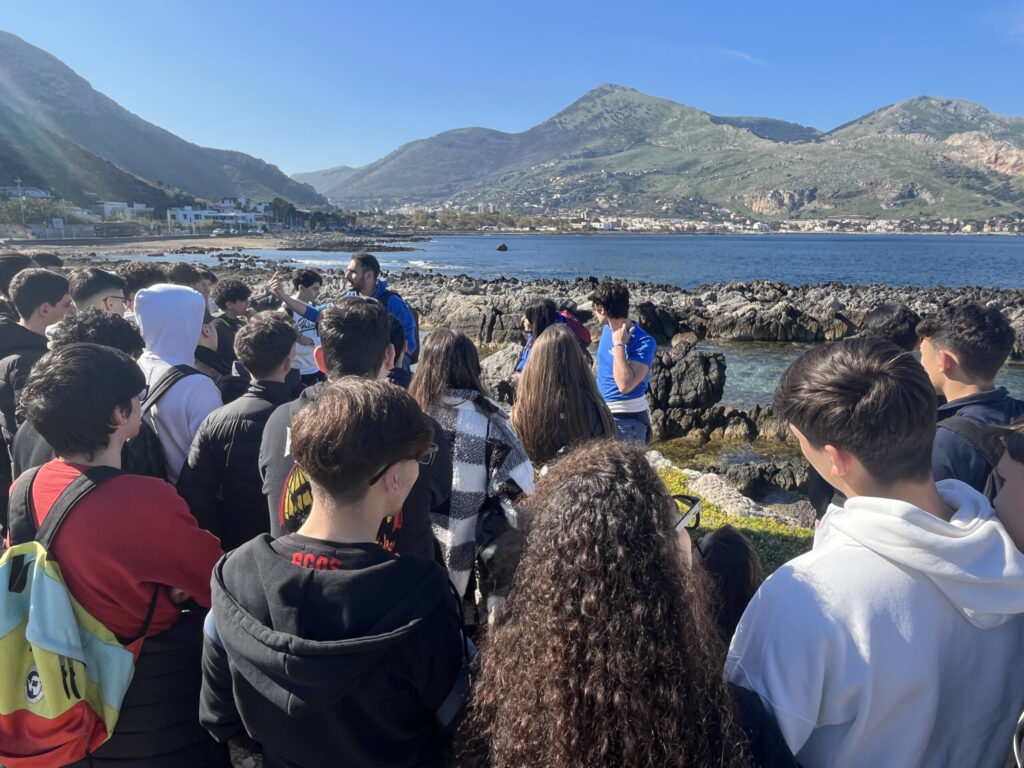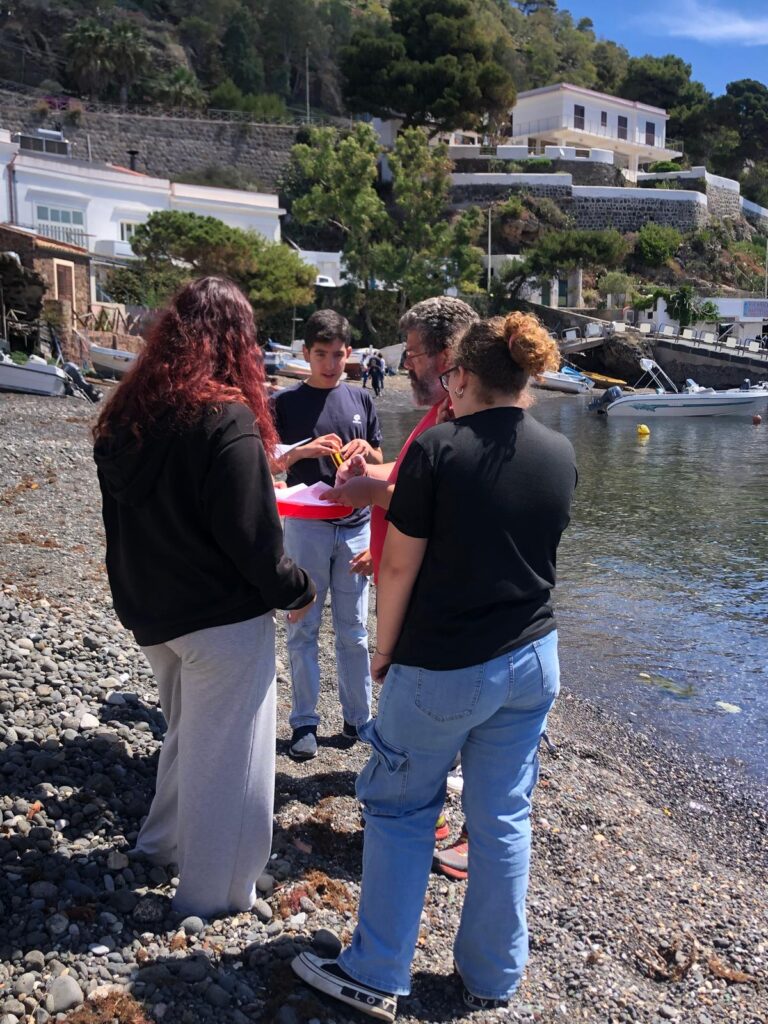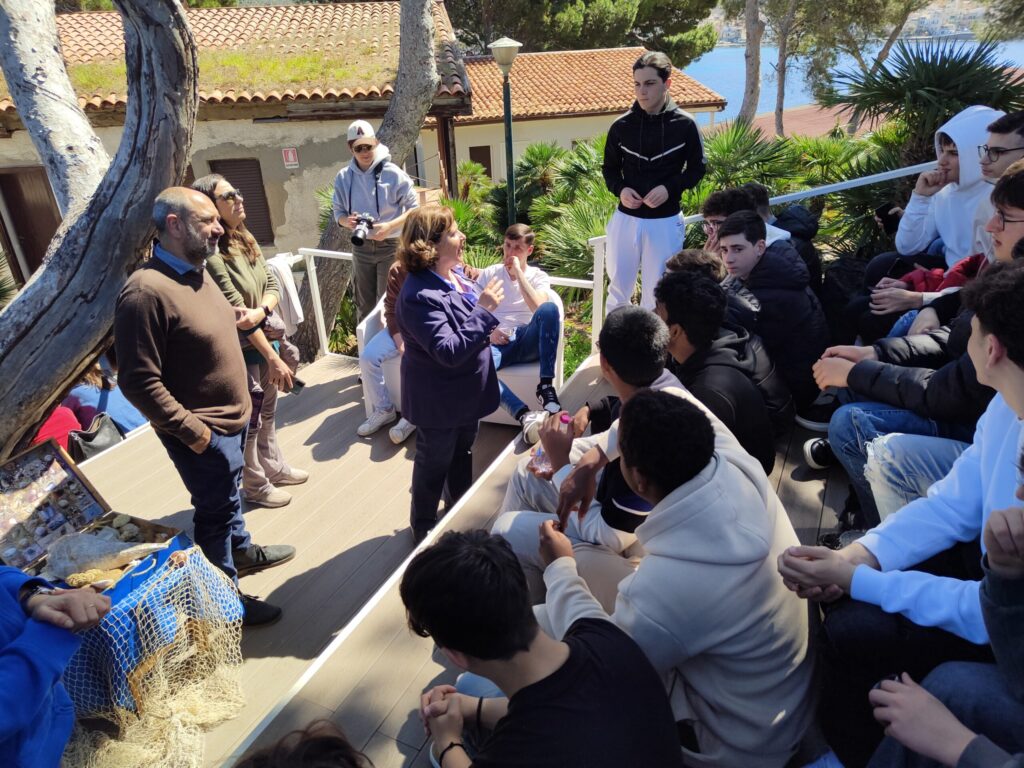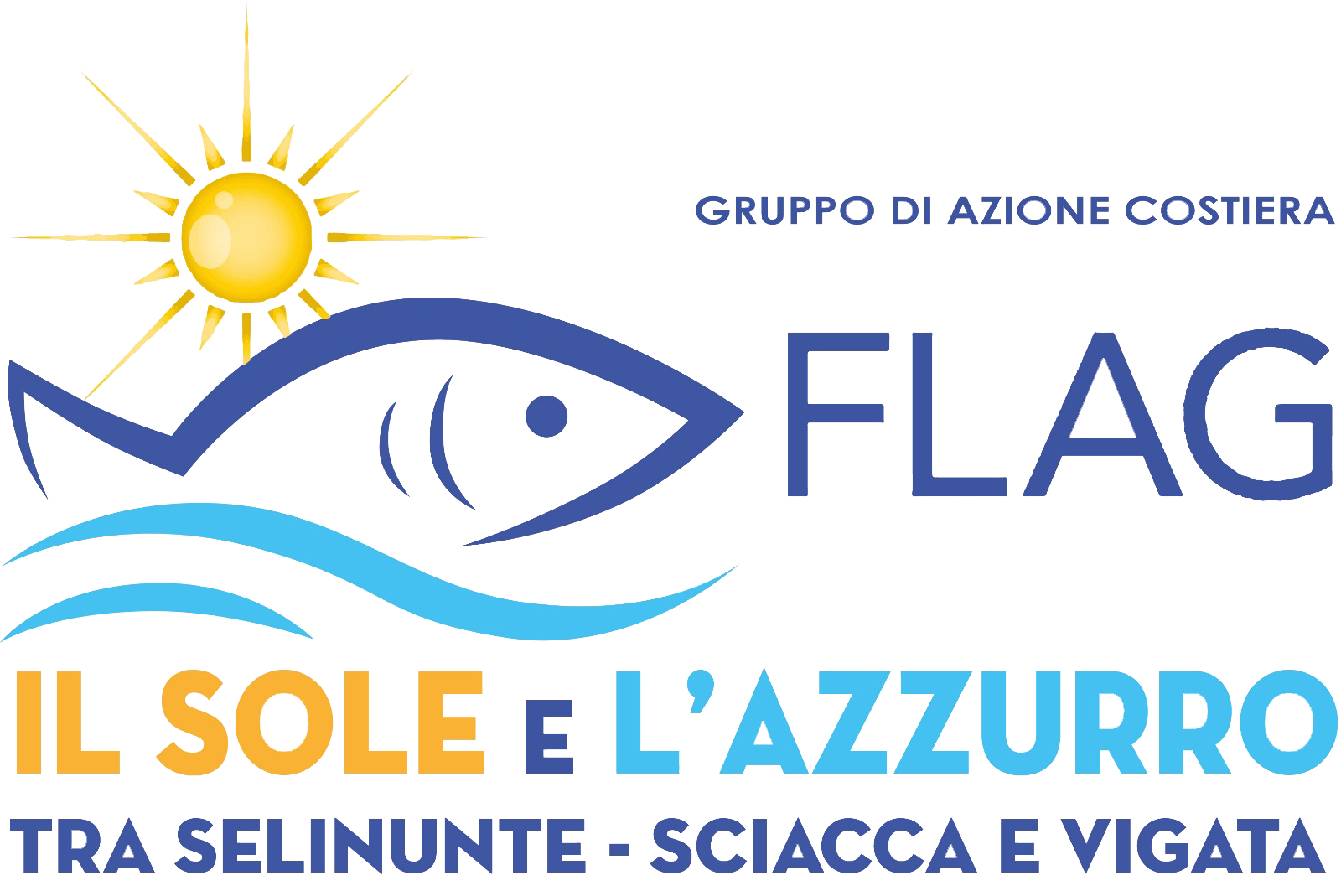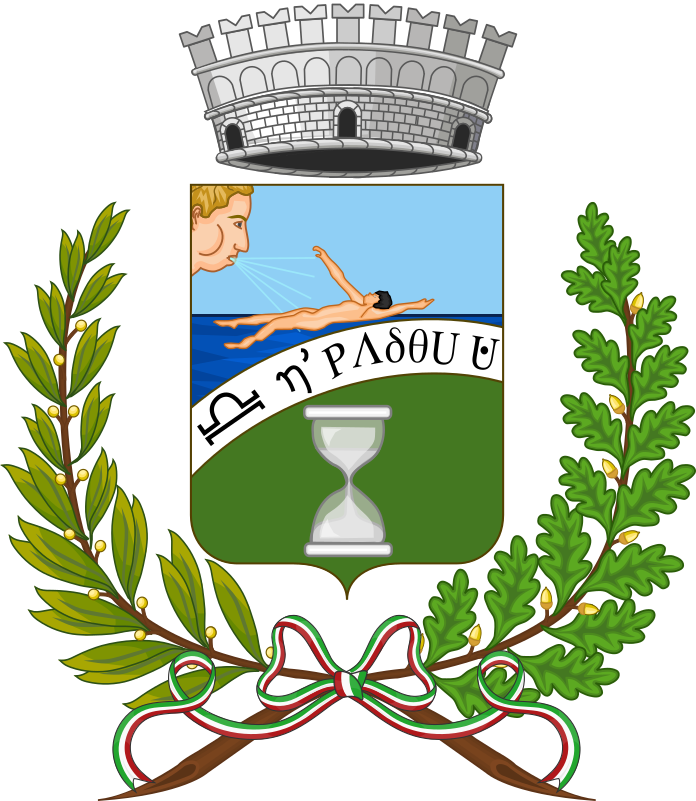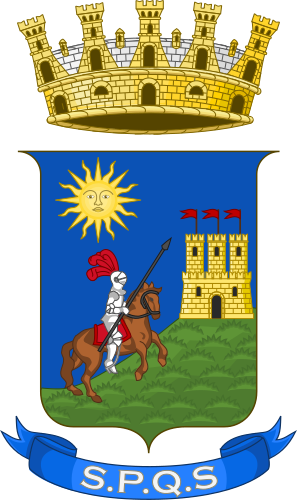Interventions
The project aims to establish an integrated museum complex dedicated to the island’s cultural and natural heritage, leveraging new technologies. These facilities will offer insights into the island’s resources, focusing on its historical and cultural aspects, but particularly highlighting its natural, environmental, and scenic assets. The region will be presented through an immersive storytelling experience that explores the Marine Protected Area, the island’s geology, its marine depths, history, and archaeology. Utilizing digital devices and technologies, visitors will be immersed in a multisensory experience featuring high-quality, scientifically robust content, specially developed from real-world elements and reconstructions of various contexts or historical periods.
This space will become a new cultural attraction, as well as a key hub for revitalizing the area by facilitating the creation of a Community Enterprise and the management of innovative products and services developed within the project.
The goal of the Intervention is to promote the island’s cultural and natural attractions and trails, making them appealing for immersive experiences especially for younger generations, by creating a community space equipped with cutting-edge technologies.
The R.E.I.L. represents an opportunity to enhance and promote folk and religious traditions, myths and legends, oral culture, social practices, gastronomy, local productive knowledge, traditional arts and crafts. Combined with the remarkable historical-archaeological heritage and natural beauty that characterize the territory of Ustica, these elements enable sustainable initiatives for territorial development.
The initiative will enable the Municipality of Ustica to establish the REIL (Register of Intangible Local Heritage) and join a shared Mediterranean strategy aimed at safeguarding and promoting intangible heritage. This will provide international visibility to the area’s rich identity-based heritage, consisting of traditional knowledge, orally transmitted craftsmanship techniques passed down through generations, ritual celebrations, and living human treasures that embody the creativity of the region.
The goal of the Intervention is to promote knowledge, awareness, and appreciation of Ustica’s intangible cultural heritage and to stimulate strategies for territorial development based on its identity.
The initiative involves implementing local engagement activities, listening and analysis aimed at involving human resources in the area. Training sessions and team coaching will engage the community in developing solutions/ideas to enhance both tangible and intangible local resources, while establishing a community enterprise to make them accessible.
The goal is therefore to promote active participation in the Island’s regeneration through a process that provides the community with new tools, motivations, skills, and knowledge, starting from local resources and the existing human and creative capital.
The project provides training materials developed as part of the Capacity building intervention for the creation of a community enterprise. This is a complete and highly professionalizing course, aimed at providing concrete tools for the acquisition of skills and knowledge useful for the final objective of establishing a community enterprise/cooperative.
The program is divided into key modules: from the construction of an effective business model to the drafting of a sustainable business plan, up to fundraising strategies to guarantee resources and financial stability. Particular attention is paid to marketing, communication and internationalization processes, with the aim of promoting the identity of the company on a global scale. The course also addresses the dynamics of sustainable, integrated and innovative tourism, enhancing the potential of the territory in a network logic. Another focus concerns the innovation of socio-cultural and productive ecosystems, encouraging a business vision capable of generating social impact.
The videos of the lessons are open to all and available for free on the YouTube channel of the Ustum Cultural Programme project.
The initiative includes actions to promote and disseminate awareness of the island’s natural resources through a program of activities involving all regional schools. This will be achieved both through workshop activities in the schools themselves and through field activities and excursions to educate students about environmental sustainability and ecosystem conservation.
The overall objective of the Intervention is to promote the involvement of new generations in learning about Ustica’s resources and the themes of sustainability and maritime traditions, using the concrete example of the Island and the ongoing Project implementation.
The objective of the intervention is to provide a useful knowledge base for the implementation of the Project and to stimulate new and subsequent integrated initiatives; to encourage new strategies and policies for the regeneration of the village, starting from the interactions between the various stakeholders and the territory; and to define the right conditions to maximize the impacts generated by the project.
The project involves creating advanced technological solutions to enhance the accessibility of the island’s archaeological areas, including the Rocca Falconiera Village, dating back to the 3rd century B.C., and the Tramontana Village, inhabited until the 12th century B.C. Narrative and multimedia content, along with 3D reconstructions of the sites, will be accessible through a dedicated app. By offering an innovative way to experience these archaeological sites, the initiative aims to increase the island’s heritage visibility and tourism engagement, providing new interpretive keys and improving public access to its cultural assets.
The project involves creating new experiences and itineraries while enhancing existing ones to reconnect and mend the fragmented cultural heritage, developing alternative proposals capable of deselecting and diversifying the tourism offerings. The goal is to systematically integrate the island’s key attractions and resources across various domains (historical, archaeological, underwater, naturalistic, food and wine, etc.) to enable a cohesive promotional strategy. The initiative aims to highlight and connect not only Points of Interest (POIs) but also networks of relationships that can spark shared social, cultural, and economic development.
L’obiettivo dell’Intervento è ampliare l’offerta turistica dell’Isola attraverso l’implementazione di nuovi approcci e strumenti integrati che puntano a una visita esperienziale e innovativa.
In synergy with the Capacity Building Initiative, the activation of the incubator aims to trigger new development processes starting from existing endogenous resources, leveraging primarily human capital which must take on the role of activating the regeneration of its territory. From these factors, new concrete entrepreneurial experiences emerge that place the community at the center—its energy and skills, the resources of the territory where it lives, and the tangible and intangible common goods to be identified and enhanced.
From this foundation emerges a path of regeneration and development for the entire community: the community enterprise, where citizens form a new active entity for selling products and providing services across various sectors such as tourism, creativity, culture, local production, and improving quality of life.
The incubator is therefore an initiative aimed at supporting economic development and job growth in the Ustica community by assisting the launch of a new community-based enterprise. This business will focus on enhancing and managing tourism services, experiential itineraries, and local resources as the foundation of its economic activity.
The project involves launching new cultural and artistic processes to stimulate the island’s creative fabric and enhance its appeal. In September 2025 and May 2026, a series of artistic events and initiatives will be organized to position Ustica as a Mediterranean hub for blending creativity and environmental sustainability, aiming to extend the tourist season beyond peak periods. The program will feature scheduled artistic performances, with guests gathering on the island amid both natural and urban landscapes, creating a strong experiential component for participants.
Promotional and communication activities will be implemented using integrated and digital tools to maximize the visibility of Ustica and the actions carried out under the project. This aims to revitalize the municipality, its community, and the territory as a hub attracting energy, tourists, new residents, and businesses. This initiative addresses the need to strengthen the network of relations for the Municipality of Ustica, launch internationalization and innovative promotion processes, foster cultural participation, and disseminate the results of initiatives to increase tourist flows and long-term stays in the village.
The communication will be managed and implemented through an integrated, multi-sectoral approach leveraging new technologies and methods while simultaneously utilizing traditional and established channels, in order to expand and reach a broad spectrum of local, regional, national, and international targets.
The project aims to develop networking activities at the regional, national, and international levels with a
focus on the following actions:
- Exchange of knowledge and best practices, to identify effective solutions to common challenges, improve the implementation of policies and strategies, and adopt established development models. This process also enables networks to provide learning and capacity-building opportunities.
- Coordination and cooperation, to facilitate collaboration between regions, nations, or territorial entities to address common problems or promote shared objectives in the planning of shared actions or policies, optimizing the use of available resources.
- Activation of joint development projects, to collaborate on the development of shared projects focused on the key themes of environment and sustainability, urban regeneration and social growth, internationalization, and cultural development.
Specifically, the project focuses on the creation of the National Network of Marine Protected Areas, the promotion of Ustica’s intangible cultural heritage (the subject of the Project on the Activation of the
Observatory on Intangible Cultural Heritage) through its inclusion in the REIM (Register of Intangible Cultural Heritage of Mediterranean Countries) on the international iHERITAGE platform, and the inclusion of the Municipality of Ustica in the national MILLEPERIFERIE network, as the leader of the thematic network Coastal Areas and Seaside Villages.
The thematic section “Coastal Areas and Seaside Villages,” promoted and launched by the Municipality of Ustica, is based on the need and importance of joint planning processes for island, coastal, and seaside areas characterized by both an unparalleled cultural heritage and natural and landscape heritage.
In the case of the municipality of Ustica, the cultural heritage of traditions, tangible and intangible legacies, preserved to the present day, frames the landscape, environmental, and biodiversity heritage that stands out on this island in the province of Palermo. In this sense, these riches that characterize this famous Sicilian island also conceal needs: the need to protect the island’s fauna and flora, which are perpetually at risk from predatory consumerism, the phenomenon of overtourism, and the excessive seasonality of seaside, coastal, and island resorts.
For this reason, the theme “Coastal Areas and Seaside Villages” aims to preserve the cultural and natural identity of the areas involved: from measures to protect local fauna and flora to actions to safeguard and enhance the traditions and annual customs of the areas involved, the institutions, and the communities involved.
The aim of the thematic section “Coastal Areas and Seaside Villages” is to enhance the opportunities of small and large towns in island and coastal areas, together with stakeholders, in terms of
awareness of the risks and opportunities arising from the landscape heritage of seaside resorts, to develop areas of environmental protection and research, to promote seasonal adjustment activities, to create networking opportunities on shared social and cultural themes, and to inspire the mobility of individuals and communities.

